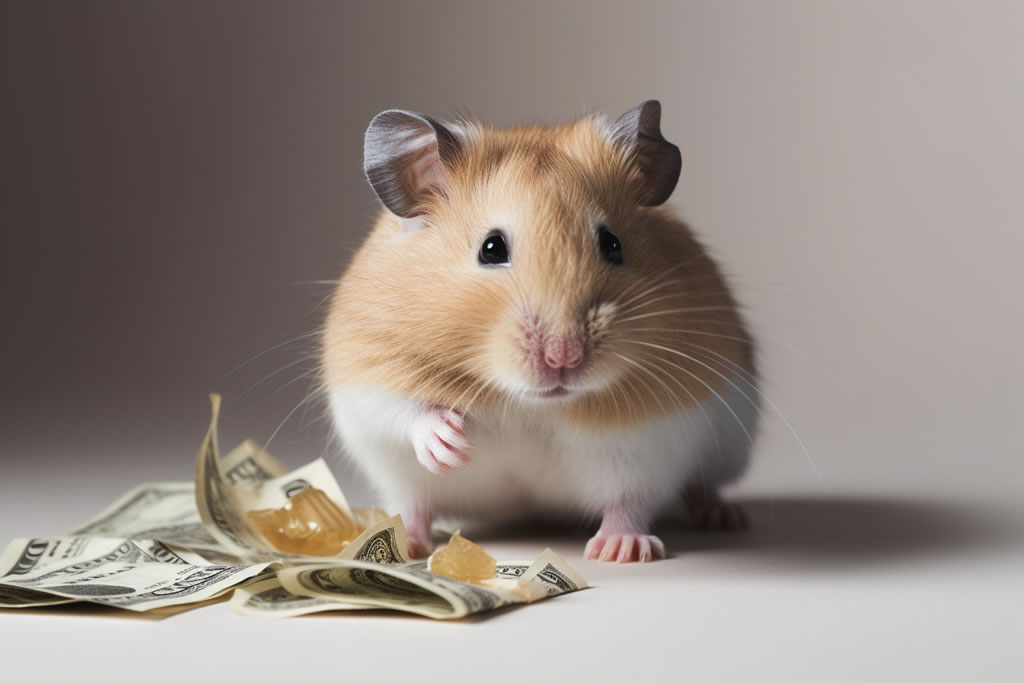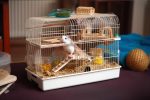Let’s cut through the fluff—that 5hamsteratPetSmartisn’t5hamsteratPetSmartisn’t5. After my Syrian, Nugget, turned my budget into confetti, I learned the hard way. Here’s the real price tag of hamster ownership, complete with “why didn’t anyone tell me?!” moments and a breakdown that’ll make your wallet shiver.
The Great Hamster Scam: Initial Costs vs. Reality
Pet Store Lie: “Hamsters are cheap starter pets!”
Reality: Your dorm room now houses a furry CEO with expensive tastes.
| Item | What They Say | What You’ll Actually Spend | Why |
|---|---|---|---|
| Hamster | $15 | $45 | Fell for the “rare sapphire dwarf” scam |
| Cage | $29.99 | $120+ | Upgraded after Nugget bent bars escape |
| Wheel | “Quiet” $12 spinner | $35 silent wheel | Roommate threatened eviction over squeaks |
| Bedding | $8/bag | $22 organic hemp | Allergies (yours, not the hamster’s) |
Pro Tip: Check Facebook Marketplace at semester’s end—desperate grads sell barely-used habitats for ramen money.
Breed Breakdown: Upfront Costs & Hidden Fees
Not All Fluffballs Are Created Equal
| Breed | Pet Store Price | Secret Costs | Time Tax |
|---|---|---|---|
| Syrian | $20 | $80 12” wheel | Nightly 3AM marathons |
| Roborovski | $30 | $150 escape-proof tank | Hours spent crawling on floor |
| Chinese | $25 | $40/month curtain repairs | Master climber = shredded drapes |
| Dwarf Pairs | $40 | $200 emergency vet bill | “They were friends until Tuesday!” |
Confession: My “15”dwarftriocost15”dwarftriocost378 in separate habitats after their cage WWE match.
Monthly Expenses: Budgeting for Your Tiny Overlord
The Harsh Truth Behind Those Cute Instagram Posts
| Category | Expected Cost | Actual Cost (With Drama) | Survival Hack |
|---|---|---|---|
| Food | $10 | $25 | They’ll boycott generic kibble |
| Toys | $15 | $0 (RIP AirPods case) | Cardboard > store-bought |
| Bedding | $20 | $45 | Nugget demands Egyptian cotton levels |
| Vet Fund | $0 | $15/month | “Why is his poop sparkly?!” emergencies |
DIY Win: Turn old socks into hammocks—free and smells like home!
Vet Bill Horrors: When Fluffballs Attack Your Savings
Common “Oops” Moments & Their Price Tags
| Emergency | Panic Level | Cost Range | Lesson Learned |
|---|---|---|---|
| Wet tail | 3AM Google frenzy | 200−200−500 | Pet store hamsters = higher risk |
| Broken tooth | Bloody carrot | 150−150−300 | Mineral chews aren’t optional |
| Mystery lump | Ugly-cry session | $350+ biopsy | Weekly tumor checks save money |
| Escape artist | Rewiring AC vents | $0 (but dignity) | Duct tape is a hamster parent’s BFF |
True Story: Paid $85 to learn Nugget’s “seizures” were him faking for blueberry treats.
The Black Market of Hamster Savings
Legit Ways to Avoid Bankruptcy
- Toilet Paper Roll Stockpile
- Free tunnels > $15 plastic ones
- Added bonus: Confetti for their next rave
- Seed Mix Psychology
- Buy parrot food (same ingredients, 40% cheaper)
- Pick out sunflower seeds as training bribes
- Freecycle.org Goldmine
- Score used tanks, wheels, and hideouts
- Pro tip: Soak in vinegar to remove eau de former hamster
- Vet Bill Hacks
- Find an exotics vet who takes “hamster installments”
- Learn basic first aid (YouTube > $300 ER visit)
The Hidden Time Investment
What They Don’t Show in Movies
| Task | Weekly Hours | Mental Toll |
|---|---|---|
| Cage cleaning | 2.5 | PTSD from finding seed stashes |
| Escape patrol | 4 | Developed spider-sense for rustling |
| Taming attempts | 3 | Accepting you’re just a food dispenser |
| Instagramming | 1.5 | 200 followers = 0 monetization |
Final Tally: First-Year Costs Exposed
| Category | Pet Store Estimate | Reality Check |
|---|---|---|
| Initial Setup | $100 | $375 |
| Monthly | $30 | $82 |
| Emergencies | $0 | $250 |
| Sanity | “Endless joy!” | Questioning life choices |
Epilogue: Was It Worth It?
When Nugget died last winter, I cried over a creature smaller than my hand. Then I found $87 in chewed-up cash under his bedding—his final troll move.



